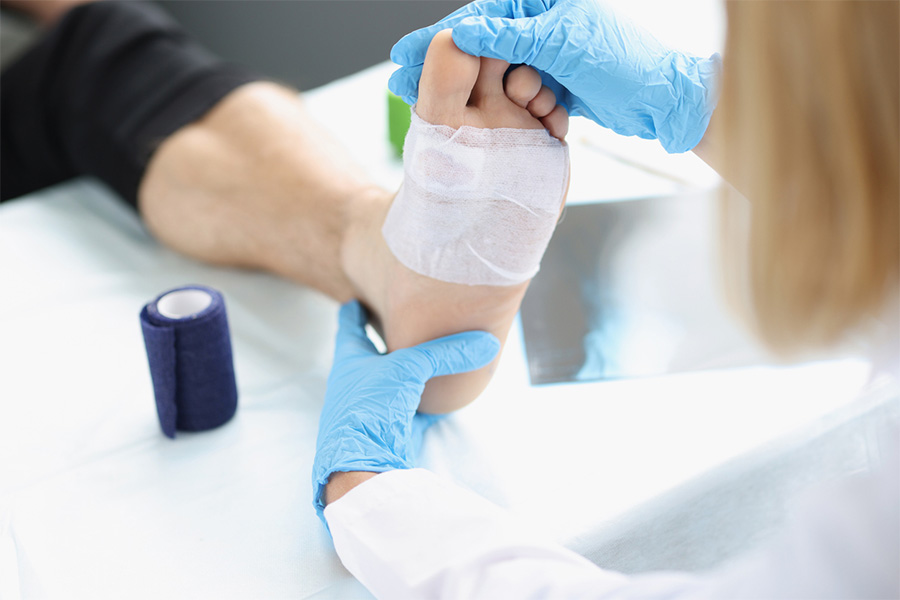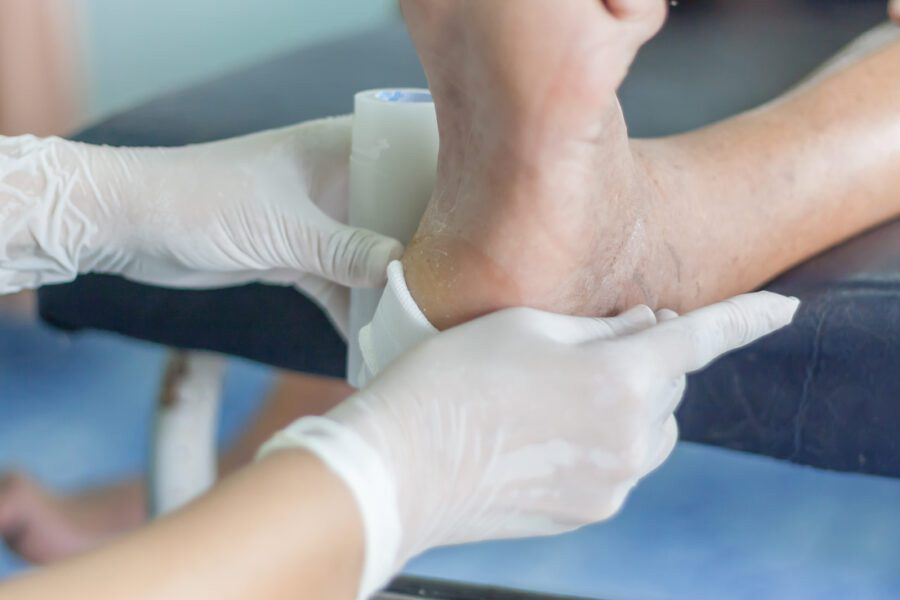When you think of an ulcer, you probably think of a hole in the lining of your stomach, small intestines, or esophagus. However, ulcers can happen in many areas of the body, and diabetics are particularly susceptible to getting foot ulcers.
Foot ulcers are one of the most common and potentially devastating complications of diabetes. When a diabetic foot ulcer develops, it can cause swelling, a burning feeling, and itching, plus it may become deeper and spread into other organs and structures – leading to gangrene and more.
About 10% of Americans have diabetes. Of these, approximately half have peripheral neuropathy, which causes numbness and tingling in their hands and feet. Neuropathy can therefore lead to diabetic foot ulcers because people cannot feel their foot injuries – such as small cuts and bruises – and so these injuries become worse.
Let’s talk about whether you might be at risk of developing diabetic foot ulcers, and where you can go for world-class podiatry treatment here in Cincinnati.
How Does Diabetes Cause a Diabetic Foot Ulcer?
In someone who has diabetes, the high blood sugar can build up in the extremities because circulation isn’t as strong – and the feet are farthest away from the heart’s pumping action. This high blood sugar can damage the nearby nerves because the nerves aren’t getting sufficient blood replenishment. This damage leads to a loss of feeling.
A diabetic foot ulcer can therefore develop as an open wound anywhere on the foot, but particularly on the sides or bottom. This serious and progressive condition may continue to penetrate through several layers of skin, also destroying underlying muscles and connective tissues in the process.
Diabetic foot ulcers can easily become infected, creating an abscess which can lead to osteomyelitis (a bone infection), cellulitis (a skin infection), and sepsis (body-wide infection). Advanced tissue destruction creates gangrene, which is actual tissue death related to poor blood supply.
What Are My Risk Factors for Developing a Foot Ulcer?
There are certain risk factors that are common to all diabetics in varying degrees. Diabetic foot care is essential for all persons with diabetes.
A diabetic has a particularly high risk of developing foot ulcers if they have one or more of the following:
- Peripheral artery disease (PAD), which compromises blood flow in the legs, arms, hands, and feet
- History of varicose veins
- Raynaud’s disease (a circulatory problem escalated by temperature extremes)
- Corns and calluses in the feet
- Excessively dry skin (which leaves skin open to bacterial invasion)
- Limited mobility and being sedentary
- High blood glucose levels
- Age over 40
- Long-term history of diabetes (10 years or more)
- Hypertension (high blood pressure)
- Congenital or acquired foot deformities, such as club foot or bunions
- Smoking
- Previous episodes of foot ulcers
- History of foot or limb amputation
Foot Surgeon Treating Diabetic Foot Ulcers
Here at Cincinnati Foot & Ankle Care, we take diabetic foot care seriously. If you have diabetes and want to take control of your foot health, contact our caring staff today by calling us at our location near you or by filling out our appointmen
Share

People with diabetes often experience difficulty healing wounds.




